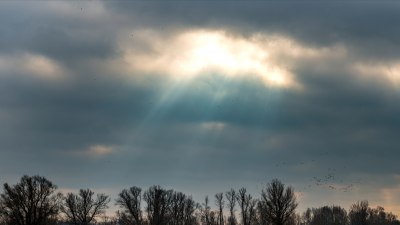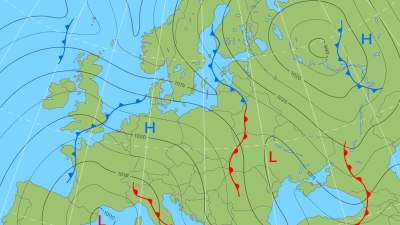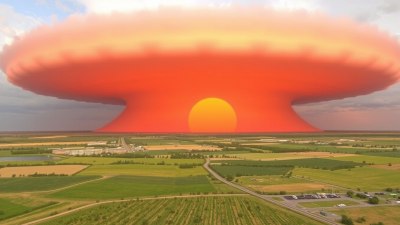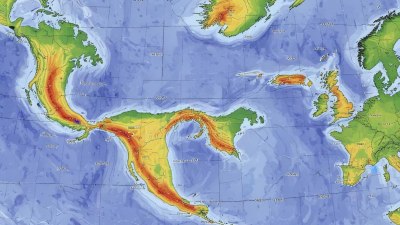When the Sky Looks Like a Storm but Nothing Actually Happens
Explore the phenomenon of stormy skies with no rain and its implications on weather patterns.

The phenomenon of stormy-looking skies without any actual rain can be both fascinating and perplexing. Many people observe dark, ominous clouds rolling in, only to be left disappointed when the storm never materializes. This occurrence is often referred to as a 'dry storm' or a storm that fizzles out before it can deliver any precipitation. Understanding why this happens requires a closer look at meteorological factors, cloud formations, and atmospheric conditions.
One of the primary reasons for the presence of dark clouds without rain is the type of clouds forming in the atmosphere. Cumulonimbus clouds, known for their towering structure and potential for severe weather, can produce a dramatic appearance in the sky. These clouds are commonly associated with thunderstorms and heavy rainfall; however, not all cumulus clouds ultimately lead to precipitation. Sometimes, the atmospheric conditions necessary for raindrops to form and reach the ground are simply not met, leading to a scenario where the sky looks intimidating, yet remains dry.
Another factor contributing to storm clouds without rain is the concept of 'virga.' Virga occurs when precipitation falls from a cloud but evaporates before reaching the ground. This evaporation happens when the air beneath the cloud is too dry, preventing raindrops from surviving the journey down. Consequently, observers may witness rain falling from clouds, but the ground remains unaffected and dry. Virga can create stunning visual effects, as it appears like wisps of rain trailing down from the clouds.
Additionally, the conditions in the upper atmosphere play a crucial role in determining whether or not precipitation will occur. Atmospheric stability, humidity levels, and temperature inversions can all impact whether storm clouds yield rain. When warm air sits above colder air, it creates a stable environment, which can inhibit the vertical development of clouds and limit their ability to produce rainfall. This phenomenon may result in the appearance of a potential storm, while in reality, little to no precipitation reaches the surface.
The area of convergence is also a significant factor when considering why storms may not deliver rain despite their threatening appearance. When warm, moist air meets cooler air, it creates updrafts that can lead to cloud formation. However, if the air masses do not converge strongly enough, the clouds may not develop into a full-fledged storm. Thus, while heavy cloud cover may suggest rain, the lack of sufficient lift and moisture convergence can result in a dry storm.
Furthermore, the time of year and specific geographic features can influence the occurrence of dry storms. During certain seasons, particularly in late summer and early fall, the atmosphere may become conducive to cloud formation, leading to dramatic storm clouds. However, this does not guarantee rain, as factors such as the availability of moisture and temperature variations can prevail in preventing precipitation. Local topography, such as mountains or valleys, can also impact weather patterns, leading to localized areas that experience the visual effects of storm clouds without significant rainfall.
The psychological effect of stormy skies can also play an interesting role in how we perceive weather. For many people, the sight of dark clouds conjures feelings of anticipation and dread, often leading to an emotional response even when no rain occurs. There is something primal about the sight of a thunderous sky that evokes a sense of awe mixed with fear. When people are caught in this mental state, the sudden lack of rain after an anticipated storm can lead to disappointment or confusion, as expectations do not align with reality.
In addition to individual psychological responses, communities also adapt to weather patterns that include the phenomenon of storm clouds without rain. People living in regions prone to dry storms often develop intuitive strategies to manage their expectations, preparing for storms that may not deliver as anticipated. This can lead to communal adjustments in agricultural practices, resource management, and even emergency preparedness strategies, as the possibility of rain can fluctuate widely in these situations.
Analyzing weather patterns, particularly those involving dry storms, is critical for improving forecasting accuracy. Meteorologists utilize advanced technologies, including radar and satellite imagery, to monitor cloud formations and anticipate weather changes. An understanding of atmospheric conditions helps refine meteorological models and forecasts, reducing the chances of false alarms associated with storm predictions. As climate science progresses, researchers continue to explore how changes in our global environment may be impacting weather patterns related to dry storms and precipitation variability.
Moreover, climate change is an influential element affecting precipitation patterns. As global temperatures rise, they alter atmospheric circulation, impacting humidity levels and cloud behavior. These changes could lead to shifts in where and how often storms form or fail to deliver rain. Consequently, the increased presence of dry storms may become more prevalent as some regions experience increased evaporation and altered humidity. This phenomenon could further complicate resource management in vulnerable areas, emphasizing the need for robust climate adaptation strategies.
The interplay between human activity and natural weather phenomena is another complex realm to consider. Urbanization, land use, and environmental degradation can modify local climates, impacting how storms develop. In urban areas, the 'heat island' effect can create localized warmth, influencing how moisture interacts with storm clouds. This integration highlights the need for sustainable practices that can mitigate disturbances to natural weather patterns while addressing the effects of climate change.
In essence, understanding the phenomenon of stormy skies devoid of rain requires a multifaceted outlook. By examining factors such as cloud types, atmospheric stability, spatial convergence, seasonal changes, human psychology, and climatic influences, we can appreciate the complex interplay that results in these intriguing weather events. This awareness serves as a reminder of the unpredictability inherent in nature—a feature that drives human curiosity about increasingly turbulent skies.
As we advance in our quest for environmental understanding, ongoing discussions surrounding weather prediction and climate adaptation remain essential. The unpredictability of storm clouds without rain invites us to explore the deeper relationships between the atmosphere, ecological systems, and human experiences. Thus, we're continually challenged to adapt to encounters with empty storm skies while appreciating the profound complexity underlying meteorological phenomena.











